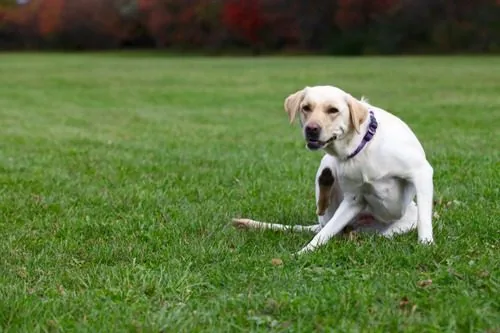Recognizing Arthritis in Dogs and Cats
 Dr. Kari Addante of The Village Vets Decatur reports…
Dr. Kari Addante of The Village Vets Decatur reports…
Arthritis is one of the most common conditions affecting cats and dogs. Studies reveal 20% of dogs over the age of 2 years and 90% of cats age 12 and older suffer from this disease. Sadly, many times it goes unnoticed for far too long because it doesn’t always present with overt signs such as limping. Because older cats and dogs are most affected, many pet owners think “slowing down” is a natural part of aging. The truth is that cats and dogs with arthritis are painful and they don’t have to be. Once the condition is recognized and treated, it’s amazing to see how much happier and active our furry friends can be.
The exact cause of primary arthritis varies but in general it relates to chronic overloading of joints over time. Repetitive motion and body weight (i.e. especially in overweight pets) both play a role in this process. Secondary arthritis is the result of trauma or physical problems present at birth (e.g. hip dysplasia, patellar luxation, etc.) that cause joint instability, chronic inflammation and eventually arthritic changes. In either case, over time the joints become more inflamed and uncomfortable which will lead to muscle atrophy and decreased mobility.
Dogs and cats affected with arthritis may exhibit difficulty or slowness in rising from a lying position. In addition, they may be reluctant or slow to climb stairs. Cats may have trouble jumping to the heights they could previously achieve and some stop jumping altogether. Both species generally exhibit decreased desire to play and sometimes become less social or interactive. In addition, a change in posture when sitting or lying down may be observed. Cats often begin to groom less and may even avoid the litter box. House soiling can occur in both cats and dogs because of the discomfort they have rising and posturing to urinate and/or defecate, and for cats it can be difficult just to get inside the litter box.
Checking for signs of arthritis is part of every physical exam. There is often decreased passive range of motion of the affected limb and muscle atrophy. In addition, crepitus (i.e. subtle popping) of the joint may be detected during flexion and extension of joints. Joint laxity, swelling and other abnormalities may also be noted especially in cases of secondary arthritis. Diagnosis is reached on the basis of history, physical exam findings as well as using evidence from imaging such as radiographs (i.e. taking x-ray films).
Once a diagnosis is reached, numerous treatment options exist and utilizing a combination of these generally yields the best results:
- Weight management is the first issue that must be addressed. All surgical and medical procedures will work much better if your cat or dog is not overweight. This may be the hardest part of the treatment, but it is well worth it because even a modest reduction of 10 percent of body weight can result in a marked improvement in mobility and comfort. Remember you control your pet’s diet so if you feed less, then weight loss will occur.
- Exercise is the next important step to help increase or maintain muscle strength. It is necessary to tailor exercise routines to meet your pet’s individual level of tolerance and endurance: take it slow initially and see what works for your dog or cat. Swimming is an excellent way for dogs to maintain muscle mass, but place minimal stress on the joints. In general, high impact activities that involve a lot of jumping should be discouraged so avoid games such as Frisbee for your dog and enticing your cat to jump for toys. It is also important to remember that exercise is needed regularly at regular intervals. For example, exercising on weekends only may cause more harm than good if your dog or cat is sore for the rest of the week and becomes reluctant to move at all.
- Providing warmth and good sleeping areas is also crucial for arthritic cats and dogs. When it is very cold, a sweater is appropriate for short haired dogs since arthritis tends to worsen in cold, damp weather. You may want to consider keeping the temperature in your home a little warmer, too. Orthopedic foam beds can be a great help as they will distribute weight evenly and reduce pressure on joints during rest.
- It is also wise to consider minor modifications in your home that can ease daily activities for arthritic pets. Purchasing or constructing a ramp can help your dog get downstairs into the yard and help with getting in and out of the car. A bench or stool can be positioned to help both cats and small dogs reach their favorite spots such as the sofa or your bed. Elevating food and water bowls can help as well especially for those with stiffness of the neck or back.
- Oral glucosamine (i.e. available in many flavored & non-flavored forms) and the injectable drug Adequan© both work to make joint fluid more viscous which literally cushions the joint and reduces the rate at which arthritis progresses. Adequan© is especially effective in this manner. Omega fatty acid supplementation can also be helpful given its anti-inflammatory properties. Prescription diets are also available for both cats and dogs with arthritis.
- Pain relief is essential and many medications, surgeries and other therapies are available for this purpose. Medical options vary for cats and dogs. Using a combination of drugs that work through different mechanisms is helpful to achieve maximum results. Acupuncture and cold laser therapy are treatments that can also aide in pain relief. Stem cell therapy is also available and gaining favor in treatment of arthritis for pets.
Regardless of your cat’s or dog’s age, arthritis is possible. Be vigilant in watching for signs and make sure to bring your pet for annual exams at a minimum. We all want our pets to lead long, happy and comfortable lives: recognizing and treating arthritis promptly is a big step in that direction.
Recent Posts
About The Village Vets
The Village Vets is a network of animal hospitals based in Atlanta, GA and the surrounding area. We offer honest, excellent service to our clients in a comfortable, friendly atmosphere. To learn more about our locations and how we can better serve you and your pet, click the button below.
Share This Post
Recent Posts
About The Village Vets
The Village Vets is a network of animal hospitals based in Atlanta, GA and the surrounding area. We offer honest, excellent service to our clients in a comfortable, friendly atmosphere. To learn more about our locations and how we can better serve you and your pet, click the button below.



